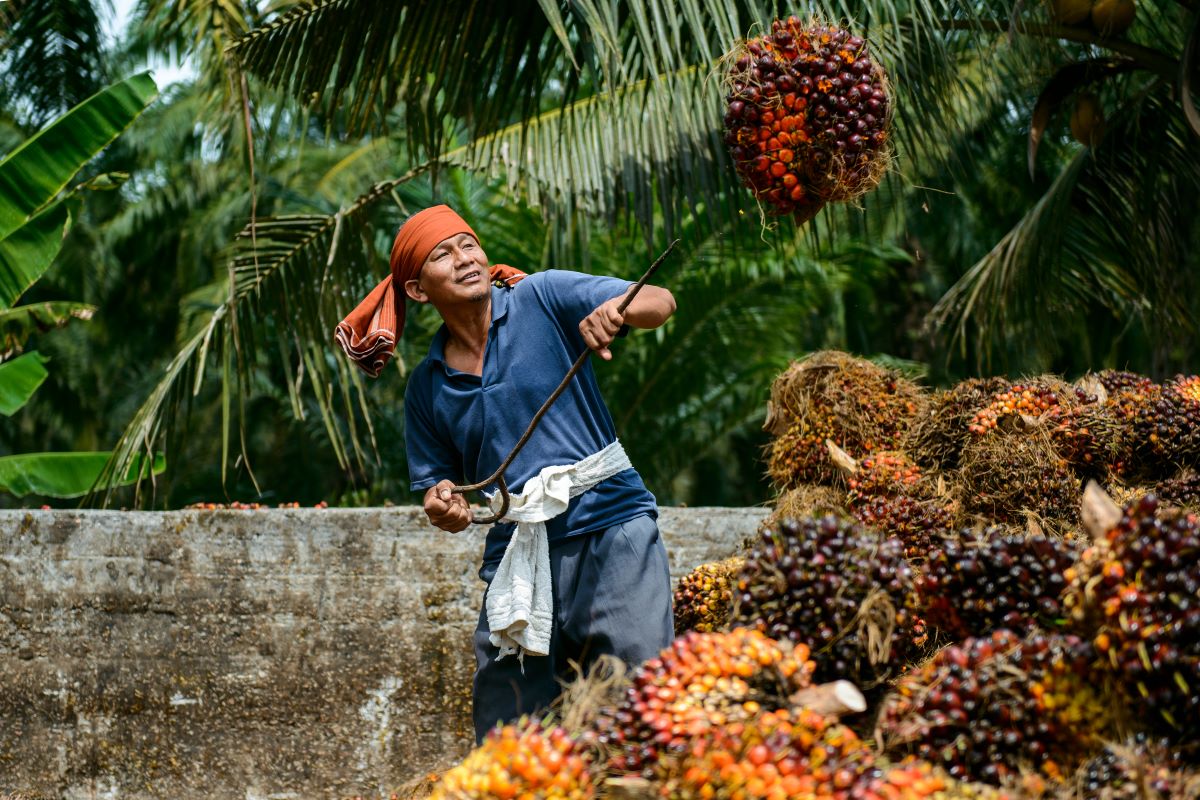A dearth of sunflower oil from Ukraine has forced food companies to explore replacing it with palm oil, often associated with devastating rainforests in Malaysia and Indonesia. Malaysian palm oil prices had soared in the past few months, but a weak supply has now brought volatility to the commodity.
Malaysian palm oil prices had nearly doubled in 2022 compared to 2021, as per data from Bursa Malaysia. However, the past week has seen palm oil prices take a nosedive, erasing all gains made this year, as Indonesia lifted an export ban while crude oil prices have slumped making palm oil less attractive as a biofuel.
The bad image of Malaysian palm oil
Indonesia is the world’s biggest producer of palm oil, whereas Malaysia is the second-largest producer of palm oil, accounting for 85-90% of the total supply of vegetable oil. However, palm oil production has been marred with controversy as reports of mass deforestation and worker exploitation have made headlines.
While buyers have been apprehensive, a shortage of other vegetable oils is forcing them to ignore the environmental and social fallout of palm oil consumption. Although there is substantial demand for palm oil, producers in Malaysia are facing difficulties with ramping up supply, especially when the whole world is looking at sustainable practices.
Human rights advocates have said palm oil presents the perfect environment for labour exploitation. The problem is labour shortage — as most Malaysian do not wish to work on palm plantations and there is a limit on foreign workers. Back in 2020, Associated Press investigated the working condition of palm oil labourers and found that these workers were being exploited, with abuses such as child labour, outright slavery, and rape.
“You have a lack of an unionised workplace, a preponderance of migrant workers not only from different regions but different countries, so they speak different languages and there’s a lack of networking with each other and a sense of vulnerability from those issues,” Justine Nolan, the director of the Australian Human Rights Institute, told Al Jazeera.
Efforts of the Malaysian government to bring in foreign plantation workers have seen poor results, and the shortage of workers has worsened to 120,000, up from 36,000 before the pandemic, says Jeffrey Ong, president of the Malaysian Estate Owners’ Association.
The fallout of the Ukraine war
Additionally, the Ukraine-Russia war has caused shortages of fertilizers, as Russia is among the top exporters of key fertilizers. Fertilizers make up 40% of palm oil’s production cost, and the rising prices are weighing on producers. While fertilizers prices have calmed down in the past few weeks, there is a shortage of supply.
“Oil palms will not reach their full potential because of the lack of fertilizer input in the past three years and the shortage of labour,” Ong tells Bloomberg. “Even if you had money, you couldn’t get certain types of fertilizers.”
What’s next for Malaysian palm oil?
The labour woes and fertilizer shortage will reduce the production of Malaysian palm oil, which should help stabilize prices that have declined in the past week. However, this does not fare well for the Malaysian economy as palm oil is among the country’s top three exports.
Zuraida Kamaruddin, the Minister of Plantation Industries and Commodities of Malaysia, previously said that the country’s palm oil production would rebound to 23 to 25 million tons in 2022, up from the five-year low of 18.1 million tons in 2021. However, Ong sees an even lower output this year of between 18.5 million to 18.7 million tons.
It seems Malaysia may have missed out on capitalizing on the palm oil rally due to low production and weak supply during the pandemic. Industry experts say that even if Malaysia can bring in adequate workers, production will only increase in late 2022.
Meanwhile, bearish signs shown by crude oil are now weighing on the demand for palm oil. India is the world’s biggest importer of palm oil, and demand from the country will be low in the coming months as the festive season is still far away. “We see more weakness for crude palm oil prices going forward,” Gnanasekar Thiagarajan, head of trading and hedging strategies at Kaleesuwari Intercontinental, tells Bloomberg.
Malaysia-based broker CGS-CIMB Securities expects crude palm oil (CPO) prices to decline to 5,600 ringgit a tonne in 2022 and slip further to 3,800 ringgit a tonne in 2023. “The declining CPO price will likely impact Malaysian upstream palm oil producers more than Indonesian CPO producers as the former face a steeper rise in production costs as well as fall in CPO prices versus 1H22,” CGS-CIMB analysts said in a note.
Separately, Malaysia’s state-owned investment firm Johor Corp is looking to raise 1 bn ringgit ($227 m) by listing its palm oil plantation unit. The listing of Kulim Malaysia comes at a time when palm oil prices are cooling off after a rally of three years.










 Australia
Australia China
China India
India Indonesia
Indonesia Japan
Japan Malaysia
Malaysia Philippines
Philippines Singapore
Singapore South Korea
South Korea Taiwan
Taiwan Thailand
Thailand Vietnam
Vietnam Germany
Germany Hong Kong
Hong Kong USA
USA Switzerland
Switzerland Singapore
Singapore
 United Kingdom
United Kingdom








